Samsung Galaxy Note 3 vs Sony Xperia Z1
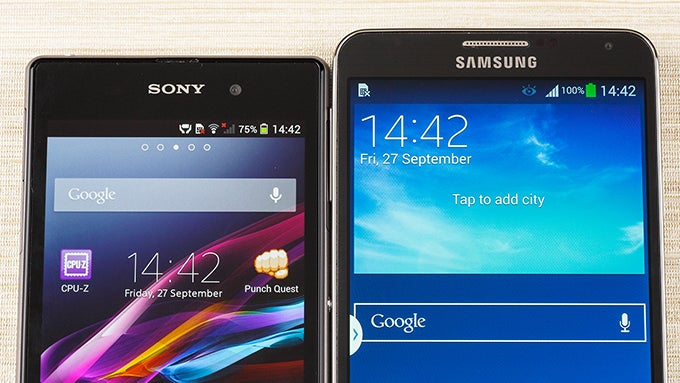
Introduction
Which is better: a phablet or a smartphone? And exactly where do we draw the line between these two types of smart devices? Is it the size of the screen that determines if we should place a device in one category or the other, or is it the overall dimensions of the device itself? Why do we ask all these questions? Well, it's because the next pages will be dedicated to our in-depth comparison between the Galaxy Note 3 phablet and the Xperia Z1 smartphone. The thing is that the Note 3 is actually among the more gracious phablets money can buy right now, while the Z1 is definitely among the bigger Android flagship smartphones at the moment. These facts will definitely make this face-off quite interesting.
Let's dive in and see how the two devices are going to counter each other in this fight of epic proportions!
Design
Let's stick with the design topic for a moment. We absolutely have to make the point that in terms of size, the Xperia Z1 (5.69 x 2.91 x 0.33 inches) is dangerously close to the Note 3 (5.95 x 3.12 x 0.33 inches). So close, actually, that it makes this comparison completely relevant, despite the fact that the two should technically be considered part of two different device categories. Still, as big as the Z1 is, it's still slightly smaller than the Note 3, making it feel a bit more comfortable to use. So, even though it's unprecedentedly big, the Xperia Z1 is still the easier to operate handset of the two.
Size is really important, but appearance and build quality should also be considered. This is where the Sony Xperia Z1 simply blows the Samsung Galaxy Note 3 out of the water. The glass and metal casing of the Z1 presents users with a much more exquisite design that not only looks better, but feels much more solid as well. Meanwhile, the Note 3 offers you a run-of-the-mill plastic body that simulates a leather finish. The Samsung doesn't feel cheap or anything, but it's far from the classiness presented by some other companies on the market, such as Sony, HTC, or Apple.
Sadly, when it comes to the feel of the physical buttons, the Z1 doesn't do anything that much better compared to the Note 1, as its keys are quite small and don't necessarily feel so clicky. It does, however, feature a camera shutter that is quite good. The Note 3 lacks such a key.
Both handsets are charged using their microUSB ports, but there's an important difference here, as the port of the Note 3 is USB 3.0 compatible, meaning that if you have a USB 3.0 port on your computer, you'll be enjoying faster transfer speeds and charging, as long as you're using the compatible cable.
So, the Xperia Z1 doesn't have a fancy microUSB 3.0 port, but what it does have is a certain degree ruggedness with its IP 58 certification, which means it's both dust- and water-proof. Meanwhile, the Note 3 has its hallmark feature, the S Pen stylus, which allows you to take handwritten notes or why not even draw on that 5.7” canvas.
Display
Even though they are very close in terms of size, the Note 3 sports a significantly larger, 5.7” 1080p screen, compared to the Z1's 5” 1080p one.
High-quality LCD displays are usually considered more accurate and mature compared to AMOLED-based screens, such as the one of the Galaxy Note 3. That's mostly due to the LCD's higher brightness output and natural-looking colors, but the exact case we're dealing with here isn't so typical, and here's why...
Samsung is introducing regular improvements to its Super AMOLED screens, and we're happy to see that with the Note 3, the company has almost eliminated the problem with the troublesome outdoor visibility such displays usually suffer from. As a result, the phablet's panel is almost as bright and easy to see as that of the Xperia Z1. The other specificity in this case is the fact that the Z1 utilizes a so-called TFT panel (no IPS tech here), which makes it appear quite washed out when viewed at an angle, despite the 'Triluminos' enhancements.
That said, there's no escaping the fact that the screen of the Z1 produces a much more realistic image quality, due to its color temperature of 7000 K (kelvin) and Delta E (grayscale) of 3.96. With the Note 3, everything is somewhat unpleasantly greenish/bluish, due to insufficient red (color temperature: 8100 K; Delta E (grayscale): 6.34). It may not seem so obvious if you don't use a reference, but the moment you see both screens side by side, it becomes blatantly obvious that Samsung still has a lot of work ahead of it when it comes to ironing out all the kinks of its AMOLED screen technology.
Interface
While the Xperia Z1 features Android 4.2.2, the Galaxy Note 3 is treating its users to the slightly newer experience of Android 4.3. Of course, both handsets are also equipped with custom user interfaces. On the Xperia Z1, we have Sony's custom UI, which covers pretty much all of the core OS applications. The same goes for the Galaxy Note 3, which features Samsung's TouchWiz Nature UX. As far as polish and uniformity goes, we'd say that Sony has done a slightly better job overall, but in terms of bonus features, Samsung has created one really impressive list of additional goodies, including S Health, Samsung Hub, Samsung Apps, S Beam and so on and so forth.
Samsung's TouchWiz is really the more colorful UI here. Whether to showcase those ultra-saturated colors of the AMOLED screen or for something else, we don't know, but TouchWiz makes use of a very wide palette of colors. It's almost cartoonish-looking with its appearance, but as we said, it lacks a bit in the polish department. For example, icons don't even have tap effects – they don't indicate that you've tapped them. Meanwhile, Sony's UI has a bit more strict, maybe even boring look, but it's nicely animated and feels mostly lively. It's all up to the user to decide which one they like better at this point.
Processor and Memory
There are no compromises when it comes to the silicon powering these two, as both are featuring the state-of-the-art Snapdragon 800 chipset. This ultra-powerful SoC brings a quad-core Krait 400 CPU, clocked at 2.2 GHz in the Xperia Z1 and 2.3 GHz in the Galaxy Note 3. Naturally, there's also the Adreno 330 GPU, which is one of the best GPUs one can find in a mobile device right now. It goes without saying that these are two devices are completely future-proof, having the potential to flawlessly execute each and every app or game there is.
The Note 3 does come with a bit more RAM, as it packs 3 gigs, versus the Z1's 2 gigs. That wouldn't make that much of a difference, as long as you aren't trying to run a dozen of heavy apps on your smart device at the same time.
When it comes to storage space, the Xperia Z1 comes with just 16 GB of internal storage, while the Note 3 is offered in 32 GB and 64 GB flavors. This isn't such a problem, though, having in mind that both handsets offer memory expansions through their microSD card slots.
Phonebook
There isn't anything shocking or irregular when it comes to the contacts applications on both devices. Still, we tend to prefer the phonebook of the Xperia Z1, due to its cleaner and more intuitive design. However, what we don't like about this one is how the dialer and call log share the same screen, leaving a limited amount of space for your recent calls — and we know that's the screen which many people use to dial their contacts. This problem isn't present on the Samsung Galaxy Note 3, where there are separate tabs for the dialer and the call log, however, the Note 3 lacks a tab for the contact groups, while such is present on the Z1.
Thankfully, we like how both devices offer us the option to find our contacts using smart dialing, or in other words, by using a T9-style typing in the dialer.
Organizer
The Xperia Z1 and Galaxy Note 3 sport all the must-have organizer tools, such as versatile note apps, voice recorders, calendars and so on. There are certain differences between the two, of course. In general, Samsung's offering tends to offer a bit more flexibility and options, especially with the S Note app which packs a bunch of tools for drawing. Meanwhile, Sony's apps have more simplistic and less cluttered layouts.
Messaging
The Galaxy Note 3's onscreen QWERTY keyboard may be a bit more versatile as it features an additional row for numbers, but its landscape layout doesn't seem to be so comfortable to use, due to the device's excessive width. The Note 3's portrait keyboard, though, is very comfortable for two-handed typing. Thankfully, you aren't out of luck in case you'd like to type with one hand only, as you can easily switch to a special layout designed to make it easy for you to type with just a thumb. On the other hand, the keyboard of the Xperia Z1 is quite good – we like its overall design, and have experienced no issues with it.
Those things that we said about the layouts of the apps a bit earlier are fully valid here as well, as we do prefer the clearer interface of Sony's Email app. Sure, you can always grab a third-party one if you don't like what's coming built-in, but if you'd prefer to stick with the stock software, the applications on the Xperia Z1 prove to be slightly more convenient to use, with regards to the user experience.
Internet and Connectivity
While the Galaxy Note 3 comes with two browsers, Chrome and the custom Samsung one, the Xperia Z1 has totally ditched any custom solutions in favor of Google's own browser. Having a second browser doesn't hurt, of course, but we tend to be fans of the more streamlined experiences, which is what the Xperia Z1 will offer you. Samsung's custom browser used to be quite useful when it was significantly faster than Chrome and featured support for Flash Player, but at this point we no longer see that much use in it.
Both the Xperia Z1 and Galaxy Note 3 sport up-to-date cellular radios with support for LTE Cat4, which translates to 4G speeds of up to 150 Mbit/s downlink and 50 Mbit/s uplink. Of course, it should be kept in mind that these are theoretic figures, which one is highly unlikely to achieve in the real world. Should you not have access to LTE, there's always HSPA+ support for download speeds of up to 42.2 Mbit/s and upload of up to 5.76 Mbit/s up.
Aside from these standard connectivity features, the Note 3 keeps adding more, as it also packs NFC, MHL and infrared, while the Z1 only has NFC. All the latest Wi-Fi and Bluetooth protocols are supported on both handsets.
Camera
The Xperia Z1 comes packing some impressive camera hardware for a smartphone. For starters, there is a 20.7 MP sensor with a size of 1/2.3", while the Galaxy Note 3's 13 MP camera has a sensor size of 1/3.06", which is smaller. Meanwhile, the Z1's aperture is also quite wide at f/2.0, which is a bit better than the Note 3's f/2.2. Focal length of the Xperia Z1 is 27mm (compared to 31mm for the Note 3), which will allow you to capture more of the scene in front of you.
In terms of camera UI, both handsets are quite versatile and convenient to use at the same time. The Xperia Z1 does manage to trump the Note 3 a bit in the comfort department, due to its better organized camera settings, but the Galaxy Note 3 kind of makes up for it with the plethora of different modes that it offers, such as Beauty face, Night, Best face, Best photo, Sports and so on. The Xperia Z1 has a bunch of cool modes of its own, though. For example, there's Social Live, which is a really fun feature that lets you broadcast video directly to your own Facebook feed.
Turning our attention to the images themselves, we notice that the Xperia Z1 tends to produce even better pictures than the Galaxy Note 3, which is a wonderful camera phone on its own. In-focus details are significantly sharper in the 20.7 MP photos taken with the Xperia Z1. There is still a noticeable amount of noise, but on the whole, the data captured by the Z1 is a bit more substantial than what you can get out of the Galaxy Note 3's snapper. Colors are another interesting area to observe, as the Xperia Z1's photos are usually more realistic-looking. That's not to say that those from the Galaxy Note 3 are bad — quite the contrary — but they are a bit too contrasting. However, we definitely don't like the way the Z1 overexposes certain brightly-lit areas, which otherwise appear fine when captured with the Galaxy Note 3.
An added bonus to the 20.7 MP camera of the Xperia Z1 is that it lets you use the so-called Clear Zoom, which enables up to 3x high-quality zoom, unlike the simple digital zoom that the Note 3 is capable of.
Indoor pictures are great with both phones. There is once again a bit more detail with the Xperia Z1, but there's also a slightly higher amount of noise. Still, the Z1 does seem to manage the color balance better in lower-lit scenarios. Comparing the power of the LED flashes, the one on the Z1 has the upper hand, as it's capable of illuminating slightly more of the scene in front of the camera.
Indoor pictures are great with both phones. There is once again a bit more detail with the Xperia Z1, but there's also a slightly higher amount of noise. Still, the Z1 does seem to manage the color balance better in lower-lit scenarios. Comparing the power of the LED flashes, the one on the Z1 has the upper hand, as it's capable of illuminating slightly more of the scene in front of the camera.
When it comes to video recording, both handsets can go up to 1920 x 1080 resolution, but the Note 3 steps things up by offering smoother 60 fps video recording, as well as 4K video recording at 30 fps. In order to enjoy the 4K footage, however, users have to own a 4K-compatible display. There is a bit more sharpness and contrast to the image quality of the Note 3's video, while the Z1 once again sticks to a slightly more realistic image. There isn't such a big difference between the two, though. The sound quality of the recorded video is a tad better with the Xperia Z1. The one of the Galaxy Note 3 is loud and clear, but lacks a bit in the low frequency department.
Multimedia
The Sony Xperia Z1 and Samsung Galaxy Note 3 are true multimedia powerhouses, but naturally, the bigger screen of the phablet will be even better for stuff like watching video or playing games, though the differences in the image quality are still valid. Once again, users will have to decide if they'd prefer the Galaxy Note 3's contrasting and vivid visuals, or the Xperia Z1's more natural color balance. It should also be kept in mind that the Z1's viewing angles are quite poor, which means it'll be difficult for a number of people to enjoy a video at once.
As far as music playback is concerned, you have Google's Play Music app with both, as well as Sony's and Samsung's custom music players, respectively. Both of them are good and represent what the companies stand for – Samsung's music app sports lots of settings and features, while Sony's Walkman music player is cleaner and a bit more modern. Both handsets come with high-quality earphones, with those of the Xperia Z1 managing to output a slightly better sound. Other than that, neither pair of earphones isn't very convenient to use.
Loudspeakers, loudspeakers... it's probably not very easy to get them to sound right, as both the Z1 and the Note 3 don't seem capable of outputting above average sound. That's pretty much all you're going to get with them – average sound quality, but the Note 3 does manage to gain the upper hand with its slightly clearer and louder sounding.
Call quality

Of course, it should be kept in mind that sound quality during calls depends on a number of factors, so the experience is bound to vary.
As we said in the previous part, neither speaker is particularly impressive, but the slightly stronger and clearer output of the Galaxy Note 3 should prove to make it a bit more suitable when using the handset's speaker in loud environments. The Xperia Z1's loudspeaker will also get the job done, though.
Battery
Both the Samsung Galaxy Note 3 and Sony Xperia Z1 feature some quite beefy battery units. The one on the Note 3 is a 3200 mAh, while the one of the Z1 has a capacity of 3000 mAh. According ot the official statistics provided by the manufacturers, the Xperia Z1 should offer a continuous talk-time of 15 hours in 3G, while stand-by is rated at 35 days in 3G and 31 days in 4G, which are all great figures. The Galaxy Note 3 is also a very good performer in that respect, as it should theoretically offer about 17 days of stand-by and 21 hours of talk-time in 3G. Keep in mind that these are theoretic times that do not factor in things like the power consumption of the display, so once again, battery life will definitely vary depending on your usage behavior.
But enough of the boring statistics. We've done our own battery test with both phones and have found the Note 3's battery to be slightly longer-lasting. Our battery test is designed to replicate typical real-world usage, and although it can't be 100% representative of the actual battery life users are going to experience, it's bound to give us a better idea of how the devices are going to perform. So, the Galaxy Note 3 managed to remain active for about 6 hours and 8 minutes, while the Z1 powered itself off after about 4 hours and 42 minutes. That's quite a difference, indicating that in most cases the Note 3 should be able to remain alive for a bit longer than Sony's offering.
Conclusion
At the end of the day, which one should consumers go for – the Note 3 phablet or the Z1 smartphone? It turns out that it's actually not that easy to answer this, as it's not simply a matter of size. If the two handsets were mostly equal in what they do, then the bulkiness of the Xperia Z1 would have probably pushed us into the Note 3's direction. However, the Xperia Z1 is quite a solid contender that's able to give the Note 3 a run for its money in almost all categories. Sure, it's bulky for its a smartphone with a 5” display, but it's still a bit smaller and more compact than the Note 3. It's display is significantly smaller, but produces higher-quality visuals. The Z1's camera is about equal or slightly better in some scenarios, while the software has a more mature and streamlined look.
All of this doesn't mean that the Note 3 is an inferior product. Not at all. The Note 3 is probably the best phablet money can buy right now and it really has no major flaws. What we mean is that both handsets are very good at what they want to be, so it really comes down to the subjective nature of personal preferences. If you want the bigger screen – get the Note 3. If you prefer the more solid construction and exquisite design, get the Z1. At the end of the day, both feature top-notch hardware and tons of features to keep you busy, so you can't go wrong with either of them.

Software versions of the reviewed units:
Samsung Galaxy Note 3: Android 4.3; Build JSS15J.N9005XXUBMI7
Sony Xperia Z1: Android 4.2.2; 14.1.G.1.518

Software versions of the reviewed units:
Samsung Galaxy Note 3: Android 4.3; Build JSS15J.N9005XXUBMI7
Sony Xperia Z1: Android 4.2.2; 14.1.G.1.518

The Sony Xperia Z1S is T-Mobile US' version of the Z1. The Z1S has launched a bit later, though, so while pretty much everything that you've read in our comparison thus far holds true, we're publishing an updated comparison conclusion below.
Galaxy Note 3 vs Xperia Z1S: Conclusion
Which one should consumers go for – the Note 3 phablet or the Z1S smartphone? It turns out that it's actually not that easy to answer this, as it's not simply a matter of size. If the two handsets were mostly equal in what they do, then the bulkiness of the Xperia Z1S would have probably pushed us into the Note 3's direction. However, the Xperia Z1S is quite a solid contender that's able to give the Note 3 a run for its money in almost all categories. Sure, it's bulky for a smartphone with a 5” display, but it's still a bit smaller and more compact than the Note 3. It's display is significantly smaller, but produces higher-quality visuals. The Z1S's camera is about equal or slightly better in some scenarios, while the software has a more mature and streamlined look. Finally, we shouldn't forget about this beautiful Sony Omnibalance design, which we tend to prefer over the Note 3's plastic exterior.
All of this doesn't mean that the Note 3 is an inferior product, of course. The Note 3 is probably the best phablet money can buy right now and it really has no major flaws. What we mean is that both handsets are very good at what they want to be, so it really comes down to the subjective nature of personal preferences. If you want the bigger screen – get the Note 3. If you prefer the more solid construction and exquisite design, get the Z1S. At the end of the day, both feature top-notch hardware and tons of features to keep you busy, so you can't go wrong with either of them.
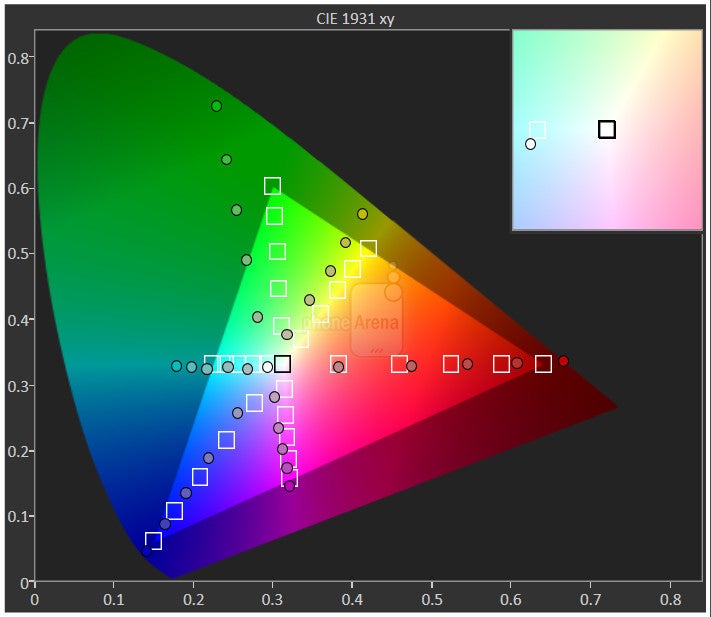







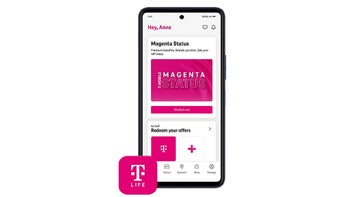
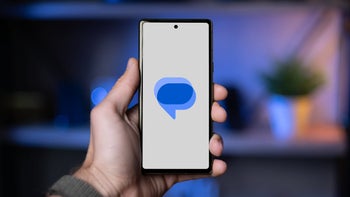


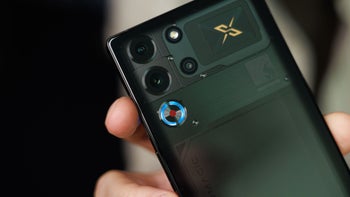

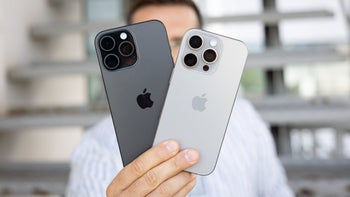


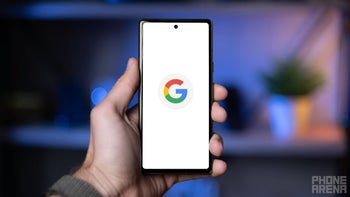
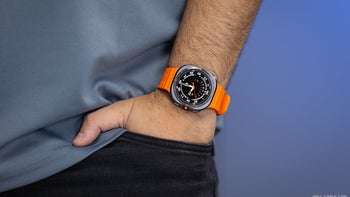






Things that are NOT allowed: